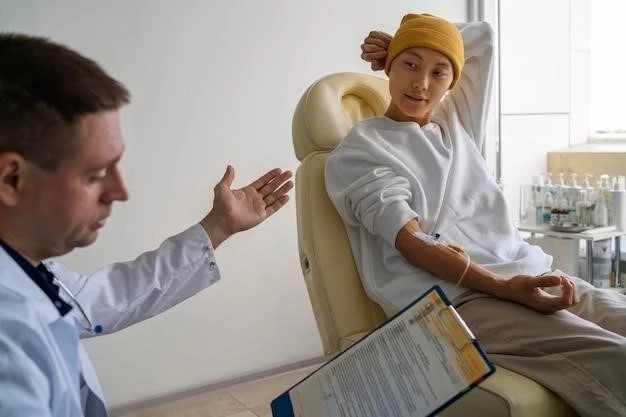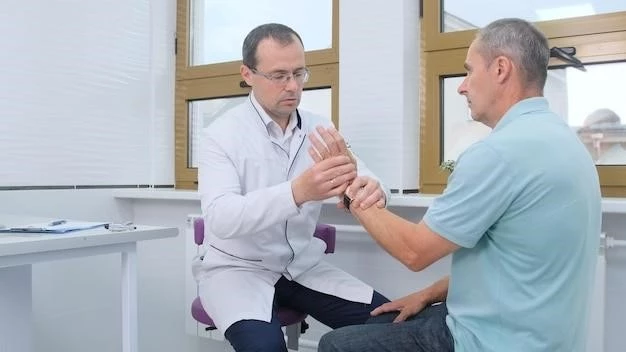Overview of Myositis Ossificans Post-Traumatic
The proliferation of bone and cartilage within a muscle after the formation of an intramuscular hematoma is known as Myositis Ossificans. It typically occurs following trauma to the muscle or a broken bone.
Definition and Causes
Myositis Ossificans Post-Traumatic is characterized by the abnormal formation of bone and cartilage within a muscle following an intramuscular hematoma. This condition typically arises as a result of trauma to the muscle or adjacent bones‚ leading to the development of bone cells within the affected muscle tissue.

Symptoms and Diagnosis
To diagnose Myositis Ossificans Post-Traumatic‚ healthcare providers consider symptoms like swelling‚ pain‚ and restricted joint movement. Diagnostic tests may include imaging studies like X-rays or MRI scans.
Clinical Presentation
Individuals with Myositis Ossificans Post-Traumatic may present with symptoms such as localized swelling‚ pain‚ and limited range of motion in the affected muscle. Clinical examination may reveal tender‚ firm areas within the muscle.
Diagnostic Procedures
Diagnosing Myositis Ossificans Post-Traumatic typically involves imaging studies such as X-rays‚ MRI scans‚ or CT scans to visualize abnormal bone growth within the muscle tissue. Biopsies may be performed to confirm the diagnosis.
Treatment Approaches
Treatment for Myositis Ossificans Post-Traumatic often begins conservatively‚ focusing on rest and proper rehabilitation protocols tailored to the individual’s condition. In some cases‚ surgical intervention may be necessary to address complications.
Conservative Management
Conservative management for Myositis Ossificans Post-Traumatic typically includes rest from activities that strain the affected muscles‚ as well as immobilization in some cases. Proper rehabilitation protocols are essential for optimal recovery.
Surgical Interventions
In cases where conservative management fails to alleviate symptoms or complications arise‚ surgical interventions may be considered. Surgical excision of the ossified tissue may be performed to improve function and reduce pain in affected individuals.
Prognosis and Complications
Research indicates varying outcomes for Myositis Ossificans Post-Traumatic‚ with some individuals experiencing full recovery while others may face complications such as chronic pain or restricted mobility. Close monitoring is essential to address potential long-term issues.
Potential Outcomes
Research indicates varying outcomes for Myositis Ossificans Post-Traumatic‚ with some individuals experiencing full recovery‚ while others may face complications such as chronic pain or restricted mobility. Close monitoring is essential to address potential long-term issues.
Associated Complications
Complications associated with Myositis Ossificans Post-Traumatic may include chronic pain‚ restricted mobility‚ and potential long-term issues related to muscle function and bone formation. Early intervention and monitoring are crucial to manage these complications effectively.
Post-Traumatic Myositis Ossificans in Different Populations
Post-traumatic Myositis Ossificans affects diverse populations‚ particularly prevalent among athletes and individuals with a history of muscle trauma. Understanding these variations is crucial for tailored management.
Sporting Community
In the sporting community‚ post-traumatic Myositis Ossificans is commonly seen as a complication of muscle injuries resulting from significant trauma or repetitive strain. Athletes may be more prone to developing this condition due to the nature of their physical activities.
Non-Athletic Cases
Although post-traumatic Myositis Ossificans is more commonly observed in the sporting community‚ non-athletic cases can also develop due to muscle trauma from accidents‚ falls‚ or other traumatic incidents. Early recognition and appropriate management are key in these scenarios.
Research and Developments
Recent studies focus on innovative treatment methods for Myositis Ossificans Post-Traumatic‚ aiming to improve outcomes and reduce associated complications. Advancements in managing this condition play a significant role in enhancing patient care.
Current Studies on Treatment Methods
Ongoing research focuses on innovative treatment modalities for managing Myositis Ossificans Post-Traumatic‚ aiming to enhance patient outcomes and reduce associated complications. Advancements in treatment methods are essential for optimizing patient care and recovery.
Novel Approaches in Managing Myositis Ossificans
Ongoing developments in managing Myositis Ossificans Post-Traumatic focus on novel approaches to enhance treatment efficacy‚ minimize complications‚ and promote better patient outcomes. Innovative strategies are being explored to optimize care for individuals with this condition.
Differentiating Myositis Ossificans from Other Conditions
To distinguish Myositis Ossificans Post-Traumatic from other conditions‚ healthcare providers rely on clinical presentations‚ imaging studies‚ and diagnostic criteria specific to this disorder. Recognizing key features is paramount in accurate diagnosis and effective management.
Distinguishing Features
Specific distinguishing features of Myositis Ossificans Post-Traumatic include abnormal bone formation within muscle tissues following trauma‚ a history of intramuscular hematomas‚ and the presence of calcifications on imaging studies.
Key Diagnostic Criteria
Key diagnostic criteria for Myositis Ossificans Post-Traumatic include a history of muscle trauma or bone injury‚ radiographic evidence of abnormal bone growth within the muscle tissue‚ and characteristic symptoms such as localized pain and swelling. These criteria help healthcare providers differentiate this condition from other musculoskeletal disorders accurately.
Preventive Measures and Rehabilitation
Strategies to avoid post-traumatic Myositis Ossificans include proper warm-up‚ gradual exercise progression‚ and avoiding overuse injuries. Rehabilitation protocols focus on restoring muscle function and flexibility to prevent complications.
Strategies to Avoid Post-Traumatic Myositis Ossificans
To prevent post-traumatic Myositis Ossificans‚ individuals should focus on proper warm-up techniques‚ gradual progression of exercise intensity‚ and avoiding overuse injuries. By implementing these strategies‚ the risk of developing this condition can be minimized.
Rehabilitation Protocols
In managing Myositis Ossificans Post-Traumatic‚ rehabilitation protocols focus on restoring muscle function and flexibility through tailored exercises‚ stretching‚ and progressive strengthening routines. Physical therapy plays a crucial role in improving mobility and overall muscle health post-injury.

Patient Education and Support
Counseling for individuals with Myositis Ossificans Post-Traumatic aims to provide education on the condition‚ manage expectations‚ and offer emotional support. Additionally‚ connecting patients with support groups and resources can enhance their coping mechanisms and overall well-being.
Counseling for Individuals with Myositis Ossificans
Counseling for individuals with Myositis Ossificans Post-Traumatic involves providing information about the condition‚ addressing psychological aspects of the diagnosis‚ and supporting patients in managing the emotional impact of the disease. Additionally‚ discussing treatment options and long-term care strategies is vital for holistic patient well-being.
Support Groups and Resources
Individuals with Myositis Ossificans Post-Traumatic can benefit from connecting with support groups and utilizing resources that offer emotional support‚ practical advice‚ and information about managing the condition. These support systems can enhance the overall well-being and quality of life for those affected by Myositis Ossificans Post-Traumatic.
